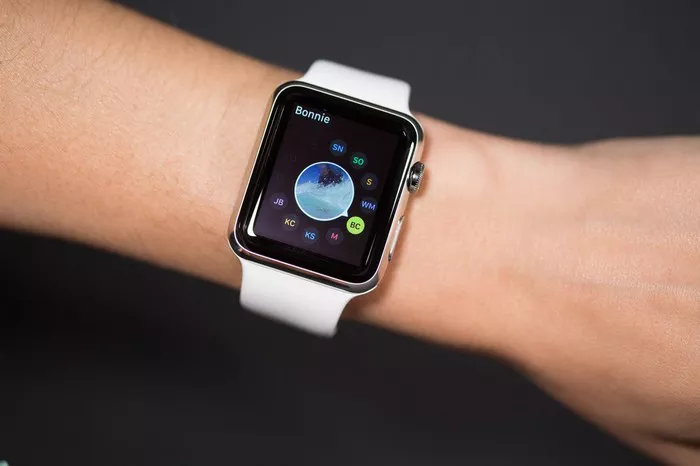Apple, a tech giant renowned for its innovation, entered the realm of wearables with the introduction of the Apple Watch in 2015. Since then, the Apple Watch lineup has undergone several iterations, each bringing new features, improved performance, and sleek design upgrades. Understanding the order of Apple Watches is essential for those looking to make an informed decision about which model suits their needs. In this exploration, we’ll navigate through the chronological progression of Apple Watches, highlighting the key features and advancements that define each generation.
I. Apple Watch Series 1 and Series 2: The Inception
The Apple Watch journey began with the original model in 2015, but it was quickly followed by the Series 1 and Series 2 in the same year. The Series 1 retained the design of the original Apple Watch but received an internal upgrade, featuring a faster processor. Meanwhile, the Series 2 introduced built-in GPS and water resistance, catering to fitness enthusiasts and swimmers.
II. Apple Watch Series 3: Cellular Connectivity Debut
In 2017, the Apple Watch Series 3 marked a significant milestone with the introduction of cellular connectivity. This meant that users could make calls, send messages, and stream music directly from their wrist, even without being tethered to their iPhone. The Series 3 also featured a faster dual-core processor and an altimeter.
III. Apple Watch Series 4: Larger Display and Health Features
The Series 4, released in 2018, brought a visually striking change with a larger and more rounded display. This allowed for new watch faces and enhanced readability. Beyond aesthetics, the Series 4 introduced advanced health features, including an ECG app that could monitor the user’s heart rhythm and detect irregularities.
IV. Apple Watch Series 5: Always-On Display Takes Center Stage
In 2019, the Apple Watch Series 5 continued the trend of evolution with its standout feature—a display that stayed on all the time. The Always-On Retina display allowed users to glance at their watch without raising their wrists. Alongside this innovation, the Series 5 maintained its focus on health, introducing a built-in compass and menstrual cycle tracking.
V. Apple Watch SE: A Budget-Friendly Option
Launched alongside the Series 6 in 2020, the Apple Watch SE aimed to provide a more budget-friendly option without compromising essential features. It shared design elements with the Series 6 but omitted some of the advanced health capabilities, making it an attractive choice for those seeking the Apple Watch experience at a more accessible price point.
VI. Apple Watch Series 6: Blood Oxygen Monitoring and Beyond
The latest addition to the lineup as of my last knowledge update in 2022, the Apple Watch Series 6, introduced blood oxygen monitoring, providing users with insights into their respiratory health. It continued the tradition of performance improvements with a faster S6 chip and added a new color—Product(RED)—to the case options.
VII. Seventh and Eighth Generation: The Series 7 and Expanded Options
The Series 7, released in 2021, showcased a redesign with a larger and more durable display, offering enhanced durability and readability. This iteration focused on refining the overall user experience, featuring a more robust crack-resistant front crystal. In the same year, Apple expanded its lineup to include the Apple Watch SE (2nd generation) and introduced the Ultra model, expanding the options available to users. The Ultra represented a distinct category, pushing boundaries with enhanced features and capabilities.
VIII. Ninth Generation: Series 9 and Ultra 2
As of the latest developments, the ninth generation includes the Series 9 and the Ultra 2. These iterations are expected to continue the legacy of innovation, introducing new features, design elements, and technological advancements that further solidify Apple’s position in the smartwatch market.
FAQs: Navigating Apple Watch Choices
Q: Can I use bands from older Apple Watches on newer models?
A: Yes, Apple Watch bands are designed to be compatible across various models. However, some newer features, like the blood oxygen sensor on the Series 6, may require specific band designs that don’t obstruct the sensors.
Q: Is it worth upgrading from an older Apple Watch to a newer model?
A: The decision to upgrade depends on your needs and the features offered by the newer model. If advanced health features, faster performance, or a specific functionality are essential to you, upgrading may be worthwhile. However, older models can still provide a solid Apple Watch experience for many users.
Q: Can I use an Apple Watch without an iPhone?
A: While an iPhone is traditionally required for initial setup and some features, the cellular versions of Apple Watches (Series 3 and newer) offer increased independence, allowing users to make calls, send messages, and stream music without being connected to an iPhone.
Q: How long does the battery last on Apple Watches?
A: Battery life varies between Apple Watch models and usage patterns. Generally, users can expect a day of use on a single charge. The Always-On Display introduced in the Series 5 may impact battery life compared to earlier models.
Q: Are there alternatives to Apple Watches in the smartwatch market?
A: Yes, several brands offer smartwatches with varying features and price points. Competitors include Samsung, Garmin, Fitbit, and others. The choice depends on individual preferences, ecosystem preferences, and desired functionalities.
In conclusion, the order of Apple Watches unfolds as a narrative of continuous innovation and refinement. Each generation builds upon the strengths of its predecessor, introducing new features and capabilities that cater to a diverse range of user needs. Whether you prioritize health monitoring, connectivity, or budget considerations, understanding the evolution of Apple Watches empowers you to make an informed choice aligned with your preferences and lifestyle.

